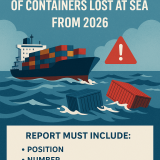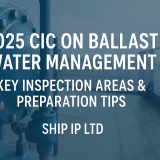The current year has seen some major claims, not least Ever Given, but the secular trend towards better safety overall continues
SIX months ago, Lloyd’s List published an article under the headline “Marine insurance outlook in two words: more expensive”.
This time the outlook can basically be summarised in three words: “more expensive still”.
The reasons why have been set out in recent interviews by senior executives in both hull and machinery and P&I.
Big-picture developments include the coronavirus pandemic and ongoing natural catastrophe losses, both of which have hit the insurance market as a whole.
However, there are also marine-specific factors, the most important of which is what insurers regard as perennial underpricing.
Despite two renewal rounds characterised by rate hikes, International Group affiliates are still losing money on underwriting.
Aggregate technical losses may have hit $500m last year, on one chief financial officer’s back-of-an-envelope calculation.
Many clubs are reporting combined ratios of more than 120% and up to almost 150% and, as the noted aphorism from economists puts it, if something can’t go on forever, it won’t.
Yes, they are mutuals rather than for-profit companies, and can eat up the deficits to some extent, especially when making healthy investment returns. Yet over the long run, they need to at least break even to stay in the game.
Investment returns in 2021 will likely fall far short of the stellar performance of 2020, leaving little alternative but to ask members to put their hands in their pockets.
In addition, the IG pool scheme has hit a record high, which is another $500m strain on the clubs, thanks to some massive casualties, including Wakashio, Hoegh Xiamen and New Diamond.
Prospects are not getting any brighter. There has been significant deterioration in the 2019 policy year.
While it is obviously still too early to call the current policy year — which commenced on February 20 — things are off to an unpromising start with Ever Given and X-Press Pearl.
Hull insurance rates are written commercially rather than on a mutual basis, and tend to be more volatile than P&I rates.
They are already up around 9% in the first half of this year and are expected to rise a further 5%-10% by the end of the year.
Part of this is down to a general hardening in the hull market after decades of losses, with the Lloyd’s market Decile 10 crackdown on underperformers one of the obvious catalysts here.
However, another driver has been high steel prices, which have doubled over the past 12 months. As a result, ship repair yards are asking for more money to do the jobs insurers pay them to do after a ship has had a prang.
On a brighter note, there has been no increase in casualty frequency — and, if anything, the trend has been benign.
Very much the main event in cargo insurance has been Ever Given, which has generated what will almost certainly be the most spectacular general average case the world has yet seen, with thousands of parties involved. Extensive litigation is taken as read.
After months of wrangling, the boxship’s P&I insurer UK Club and its Japanese market H&M insurers have reached a settlement that should have enabled the vessel to continue its ill-fated voyage by the time this is in print.
Just what that equates to in dollar terms has not been publicly disclosed, but $150m, give or take some tens of millions either way, is the approximate ballpark figure.
Reinsurance markets in general are up about 10%, largely thanks to deliberate attempts to firm rates, although things seem to have been easing up a bit in recent weeks. That adds to the pressure on primary writers.
Moreover, the massive publicity for the Ever Given grounding and the subsequent six-day closure of the Suez Canal will inevitably make reinsurance underwriters more circumspect about shipping risk.
The IG pool excess contract is negotiated on a two-year basis, and renewal this year will see two years of accumulated rises come through in one go.
Another trend identified by brokers is increasing differentiation by loss records, especially at P&I clubs that have dispensed with the notion of general increases and have moved to pricing on a ship-by-ship basis instead.
Owners whose records are deemed adverse are likely to find themselves asked for increases even higher than those set out earlier.
Conversely, those with the best safety records will still be asked for more, but not as much as some of their counterparts.
It is also the case that negotiating insurance contracts is a two-way process, especially for those whose fleet size gives them bargaining muscle.
SOURCE READ THE FULL ARTICLE
Marine insurance outlook in three words — more expensive still (source: Lloyd’s List)










